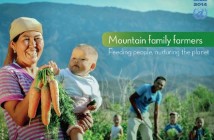The IUCN Red List is the world’s most comprehensive information source on the global conservation status of wild species and their links to livelihoods. Far more than a list of species and their status, it is a powerful tool to inform and catalyse action for biodiversity conservation, critical to protecting the natural resources we need to survive.
History of The IUCN Red List
People have an inherent fascination for scarce plants, fungi and animals, and have as a result been documenting the rarity of species for many centuries. The early beginnings of The IUCN Red List started in the 1950s with a card index system that was used to document data on threatened mammals and birds.
In the early 1960s the card index was transformed into a two-volume set of data sheets. They were presented in loose-leaf format within red binders and these drafts were not available for general circulation. In 1964 the first comprehensive list of threatened mammals and birds was compiled and published – enabling public access to the data.
As resources grew, the outputs increased and in 1988 all birds were assessed for the first time. Further groups have been completed over the years for example – 1998 all Conifers; 2004 all Amphibians; 2008 all Mammals; Cycads and Reef Building Corals; 2011 all Tuna and in 2012 all Sharks and Rays. These are major milestones in conservation because not only has the overall status of these groups been determined, but a baseline has been established from which to monitor future trends.
In 2000, The IUCN Red List was released on the world wide web, enabling broader access to information and allowing for more frequent updates.
The launch of the Amazing Species weekly fact sheets in 2010, The IUCN Red List Facebook and Twitter accounts in 2012, and the launch of the ‘Discover’ sub-site in 2013, are major contributors in building awareness about the plight of species.
The Red List process has become a massive enterprise involving the IUCN Global Species Programme staff, partner organizations and experts in the IUCN Species Survival Commission and partner networks who contribute all the necessary species information to make The IUCN Red List the indispensible product it is today.
Source: iucn.org




